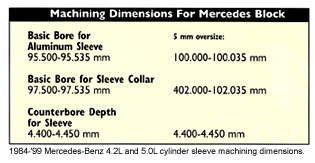Engine Builders: The AERA Technical Committee offers the following information that may help installers diagnose and repair repeated heater core leakage/failure on 1984-2003 Ford vehicles. This problem has been reported to occur shortly after engine work has been performed.
Leaks may be caused by a chemical reaction called electrolysis. Electrolysis involves an ion exchange between the heater core and engine coolant, which may result in a breakdown of heater core material. This is similar to the operation of a battery as it deteriorates.
To check for electrolysis, use a DVOM set on DC volts. Place the positive probe of the meter in the engine coolant and the negative probe on the negative battery post. Adjust engine to 2,000 rpm to allow for coolant flow and electrolysis voltages. If more than .2V is recorded, flush the coolant and recheck.

If there is still excessive voltage present in the coolant, check the engine to body/battery grounds. Also, verify proper grounding of any aftermarket electrical/electronic equipment. Improperly grounded electrical devices can cause electrolysis to occur.
If the condition is still present after checking the grounds, it may be necessary to add extra grounds to the heater core and engine. A hose clamp can be used to secure a 16 AWG stranded copper wire to the heater core inlet tube. The other end should be secured to an existing fastener on the body. Verify continuity of any added grounds to the negative battery terminal.
If the condition is still present, add a restrictor (p/n F1UZ-18D406-A) on the inlet hose with the arrow facing toward the heater core. Cut the line and install with two hose clamps. It’s important that the restrictor be installed in the right direction of flow and as close to the engine block as possible.
For information on receiving all of AERA’s regular monthly technical bulletins and other association services and benefits, call toll free 888-326-2372 or e-mail [email protected].













